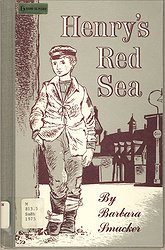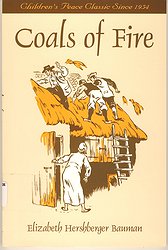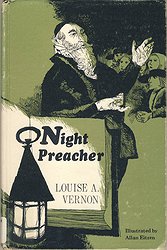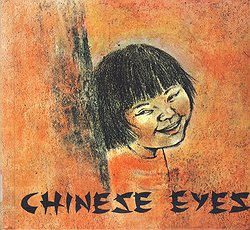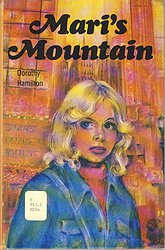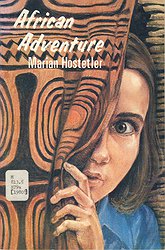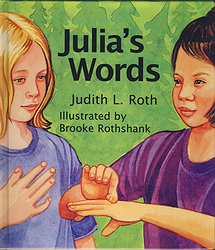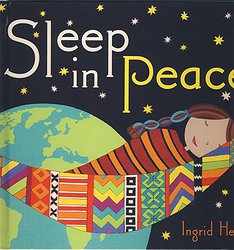Mennonites claim a strong heritage of women writers--in children’s and adolescent literature. In examining the trends of publishing at Herald Press, the book division of the Mennonite Publishing House at Scottdale, Pennsylvania, a number of distinct waves of literature become clear. I will examine the trends from Herald Press, not because it is the definitive press for Mennonite authors or illustrators, but because it has consistently published literature for children over the past 60 years. In each era of publishing, I will suggest some examples. They are not comprehensive, but representative of a specific genre, emphasis or style of writing that seemed to dominate the time period.
The first wave is represented by Barbara Claassen Smucker and Elizabeth Hershberger Bauman--specifically, Smucker’s Henry’s Red Sea (1955) illustrated by Allan Eitzen (a Mennonite book illustrator who illustrated many Herald Press books over the
decades) and Bauman’s Coals of Fire (1954). I would call these “telling the stories of faith” books. They are modern day “Martyrs’ Mirror” stories written for the school-aged reader. They are stories of having to make choices in war times and in peace times. They are stories that take on a mythic quality—showing people who do heroic things because of their faith, because they believe in peace and service and loving other people fully.
The focus on true stories of real people is a way of keeping the history of peace, justice and nonresistance alive. Henry’s Red Sea tells the story of Mennonite farmers of the Russian Ukraine who fled to Germany, where they lived in refugee camps. It chronicles how Mennonite Central Committee and workers Elfrieda and Peter Dyck helped hundreds of refugees find homes in Paraguay and Canada. It is an exciting adventure story, but written through the eyes of faith and trust in God, including near-miraculous events. Henry’s Red Sea tells the immigrant history and the faith history of one branch of the Anabaptist family—and God’s heroic intervention in the lives of humans.
Bauman’s Coals of Fire is a collection of stories of the actions of people from a number of branches of the Anabaptist family, based on their belief in justice, peace and nonviolence. In 5- to 10-page vignettes, Bauman tells of individual actions or decisions people have made at critical times. My favorite is the story of the Swiss family who wake up at night hearing someone taking the thatch off their house. The family invites the “workers” in for a delicious meal, after which the “workers” replace all of the thatch they had removed. This narrative echoes the pattern of showing forgiveness to persecutors demonstrated in the iconic Martyrs’ Mirror story of Dirk Willems, who turns back to rescue the man pursuing him across a frozen pond when he falls through the ice.
Most of the publishing in this early postwar era is in the form of chapter books that episodically tell of a historical period and the events during that period. Most are plot driven, with the characters living out the teachable characteristics Mennonites would like to pass on to the next generation. These books are action and theme driven, with an emphasis on Anabaptist principles but without a moralistic tone.
The late 1960s and early 1970s saw historical fiction and biographical fiction come to the fore, based on the lives or movements important to the church. The books of Louise Vernon and Geraldine Harder Gross are examples of this era. Vernon’s Night Preacher (1969) is the story of Menno Simons’ work in establishing the Mennonite church, while The Key to Prison (1968) follows George Fox and the beginnings of the Society of Friends. Vernon’s The Secret Church (1967) chronicles the beginning of Anabaptism and the persecution that occurred. Harder’s When Apples are Ripe (1971) is the story of Clayton Kratz, who disappeared while he was working for Mennonite Central Committee in Russia after World War I.
Although fictionalized, these stories value staying close to primary sources and presenting a narrative that builds on available historical data. They tell the story of Anabaptism through people and movements. The avenue of teaching about faith is the telling of stories of individuals—individuals who did significant things and who lived “honorable” lives in the Anabaptist tradition, worth retelling. While I have not found children’s books of this era that retell the lives or contributions of women in the church, I would be happy to be corrected.
By the mid to late 1970s we move into an era of family stories focused on current issues--interpersonal, family or global. Chapter books predominate, but picture books also arrive on the scene.
Marjorie Waybill wrote Chinese Eyes (1974), a picture book story of her own family and their adoption of a Korean daughter. Dorothy Hamilton wrote voluminously, almost in a series style--at least 32 books between 1971 and 1984--focusing on interpersonal, often family, issues in the vein of a problem novel. Her books do not specifically refer to Anabaptism, but they deal with issues we all face and bring resolution to conflict in a manner consonant with Anabaptist understandings. Hamilton, though not Anabaptist, was part of a Christian writer’s group at Herald Press, which was intended in part to get more Anabaptists writing for children in the 1970s. A small sampling over time shows the kinds of issues Hamilton was interested in addressing: Linda’s Rain Tree (1975) focuses on race as a young Black girl moves to a predominantly White school. Mari’s Mountain (1978) is the story of Mari, who runs away from an alcoholic father. In Ken’s Hideout (1979) Ken leaves home as a result of his mother’s new boyfriend. And in Last One Chosen (1982) Scott never gets chosen in ball games because he is disabled. Hamilton wanted to write about what she saw around her in the lives of the young people for whom she wrote.
During these same years Marian Hostetler also focused on the issues-based novel. Her issues, however, were international issues and grounded in her own international living and experiences from an Anabaptist perspective. In African Adventure (1976) Denise’s family moves to Chad for three years to help head up a team of agricultural workers (i.e., Mennonite Central Committee). Journey to Jerusalem (1978) takes Mim to Palestine, where she encounters the Arab-Israeli conflict. The books place young people, especially upper elementary and middle school readers, in the context of real and complex issues, but ones of an international nature. These are grounded in the author’s own experience in Mennonite organizations and, while also not explicitly Anabaptist, clearly reflect Anabaptist values, concerns and areas of interest.
The most recent wave, of picture books written for younger readers, has come into its own since 2005. Most of the books from the earlier eras discussed above were chapter books for the 8-13 year old. These books focus on the pre-school and elementary school listener or reader. The most recent ones are books about issues, but they are not problem novels with interpersonal conflicts at the core. The issues in these new books are ones of social justice, faith put into action, global citizenship, and living in a diverse world. Lisa Weaver’s Praying With Our Feet (2005), illustrated by Ingrid Hess, is the story of a girl joining her congregation in a peace march through town. This book came out at the start of the Iraq war and is explicitly Anabaptist, including an afterword for adults about the peace position of the Historic Peace Churches written by the pastor of the Madison (Wisconsin) Mennonite Fellowship.
Judith Roth also writes about current issues, usually focusing on diversity or on understanding the Other. Cups Held Out (2006), illustrated by Brooke Rothshank, follows a young girl’s trip to Mexico, where she encounters beggars and has to figure out her response. Julia’s Words (2009), also illustrated by Brooke Rothshank, tells the story of a friendship between a hearing girl (who does not sign) and a deaf girl who want to play, be friends and communicate with each other. Again the focus is on issues of justice and fairness in relationships, in international and domestic settings. Roth’s books focus on marginalized people.
A number of recent books have continued the format established by Bauman’s Coals of Fire in presenting collections of stories of peacemakers or Anabaptist heroes. In Seeds of Peace (2007), Rebecca Seiling tells 1- or 2- page stories from around the world of people who are living lives promoting peace in specific and varied ways. She represents Anabaptists from diverse cultures and time periods, half of whom are women. Her international scope and her inclusion of women are important trends that constitute a shift from earlier collective biographies published by Herald Press.
Ingrid Hess, the most recent comer to the scene, has been very productive (and has also contributed essays to this issue of the CMW Journal). Hess illustrated books for a number of other authors, and is now writing her own books. Her first two ventures into authorship with Herald Press, Sleep in Peace (2007) and Walk in Peace (2009), are written in verse, with a recurring refrain. Both are international and diverse, following children around the world as they sleep or play in all the various ways that people do. The illustrations are playful, even whimsical, and are sensitive to different defining cultural characteristics. Her latest book, Think Fair Trade First (2010), is being released as I write this essay. While grounded in understandings of God’s love for all people, Hess’s books contribute to the current emphasis on issues of social justice.
Themes that have been important for Anabaptists to pass on to children, as reflected in Herald Press, have shifted over the years, from telling Anabaptist history or listening to the lives of leaders of the Anabaptist movement to dealing with personal issues and issues of global justice. Mennonite books for children have not necessarily followed the trends in trade book publishing, but they tend to follow the shift in all publishing, in general, which includes more coverage of social justice. Mennonite writing is firmly grounded in this trend as well.
It is ironic that, although we have not historically heard many women’s stories, Mennonite publishing for children is dominated by women. Through the history of Herald Press publishing for children, it is the women writers who have kept alive the shared knowledge and story-telling about Anabaptism. One of the contributions of the most recent era of publishing is the increase in the representation of women and women’s stories.
Over all these years, children’s books from Herald Press have attempted to leave the reader hopeful, to share the unique perspective of the peace church tradition, and to nurture the next generation of children in the Anabaptist perspective. Reflecting the evolving Anabaptist traditions, the context, content and times change in what is written, published and bought, but the fact that writing and books continue to be venues for sharing Anabaptism with children remains the same.
Works Cited
Bauman, E. H. (1954). Coals of Fire. Scottdale, PA: Herald Press.
Hamilton, D. (1979). Ken’s Hideout. Scottdale, PA: Herald Press
Hamilton, D. (1982). Last One Chosen. Scottdale, PA: Herald Press.
Hamilton, D. (1975). Linda’s Rain Tree. Scottdale, PA: Herald Press.
Hamilton, D. (1978). Mari’s Mountain. Scottdale, PA: Herald Press.
Harder, G. G. (1971). When Apples Are Ripe. Scottdale, PA: Herald Press.
Hess, I. (2007). Sleep in Peace. Scottdale, PA: Herald Press.
Hess, I. (2009). Walk in Peace. Scottdale, PA: Herald Press.
Hess, I. (2010). Think Fair Trade First. [n.p.] Global Gifts, 2009.
Hostetler, M. (1976). African Adventure. Scottdale, PA: Herald Press.
Hostetler, M. (1978). Journey to Jerusalem. Scottdale, PA: Herald Press.
Roth, J. (2006). Cups Held Out. Scottdale, PA: Herald Press.
Roth, J. (2009). Julia’s Words. Scottdale, PA: Herald Press.
Seiling, R. (2007). Plant a Seed of Peace. Scottdale, PA: Herald Press.
Smucker, B. (1955). Henry’s Red Sea. Scottdale, PA: Herald Press.
Vernon, L. (1968). Key to the Prison. Scottdale, PA: Herald Press.
Vernon, L. (1969). Night Preacher. Scottdale, PA: Herald Press.
Vernon, L. (1967). The Secret Church. Scottdale, PA: Herald Press.
Waybill, M. (1974). Chinese Eyes. Scottdale, PA: Herald Press.
Weaver, L. (2005). Praying with Our Feet. Scottdale, PA: Herald Press.
